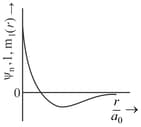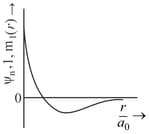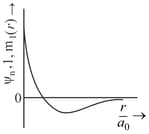EASY
Earn 100
Number of orbital(s) in zinc having at least one angular node:
(a)
(b)
(c)
(d)
50% studentsanswered this correctly
Important Questions on Structure of Atom
EASY
The correct order of their increasing energies will be:
HARD
| Column – 1 | Column – 2 | Column – 3 |
| (I) orbital | (i) |
(P) |
| (II) orbital | (ii) One radial node | (Q) Probability density at nucleus |
| (III) orbital | (iii) | (R) Probability density is maximum at nucleus |
| (IV) orbital | (iv) -plane is a nodal plane | (S) Energy needed to excite an electron from state to state is times the energy needed to excite electron from state to state. |
HARD
| Column 1 | Column 2 | Column 3 |
| (I) orbital | (i) |
(P) |
| (II) orbital | (ii) One radial node | (Q) Probability density at the nucleus . |
| (III) orbital | (iii) | (R) Probability density is maximum at the nucleus. |
| (IV) orbital | (iv) -plane is a nodal plane | (S) Energy needed to excite an electron from state to state is times the energy needed to excite are electron from state to state. |
MEDIUM
MEDIUM
EASY
HARD
| Column 1 | Column 2 | Column 3 |
| (I) orbital | (i) |
(P) |
| (II) orbital | (ii) One radial node | (Q) Probability density at the nucleus . |
| (III) orbital | (iii) | (R) Probability density is maximum at the nucleus. |
| (IV) orbital | (iv) -plane is a nodal plane | (S) Energy needed to excite an electron from state to state is times the energy needed to excite are electron from state to state. |
EASY
EASY
MEDIUM
EASY
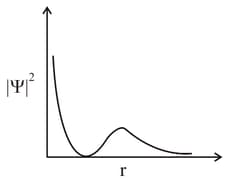
MEDIUM
An electron in an orbital of high angular momentum stays away from the nucleus than an electron in the orbital of lower angular momentum.
For a given value of the principal quantum number, the size of the orbit is inversely proportional to the azimuthal quantum number.
According to wave mechanics, the ground state angular momentum is equal to .
The plot of Vs for various azimuthal quantum numbers, shows peak shifting towards higher value.
EASY
MEDIUM
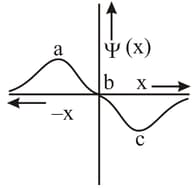
MEDIUM
EASY
MEDIUM
MEDIUM
MEDIUM
EASY


